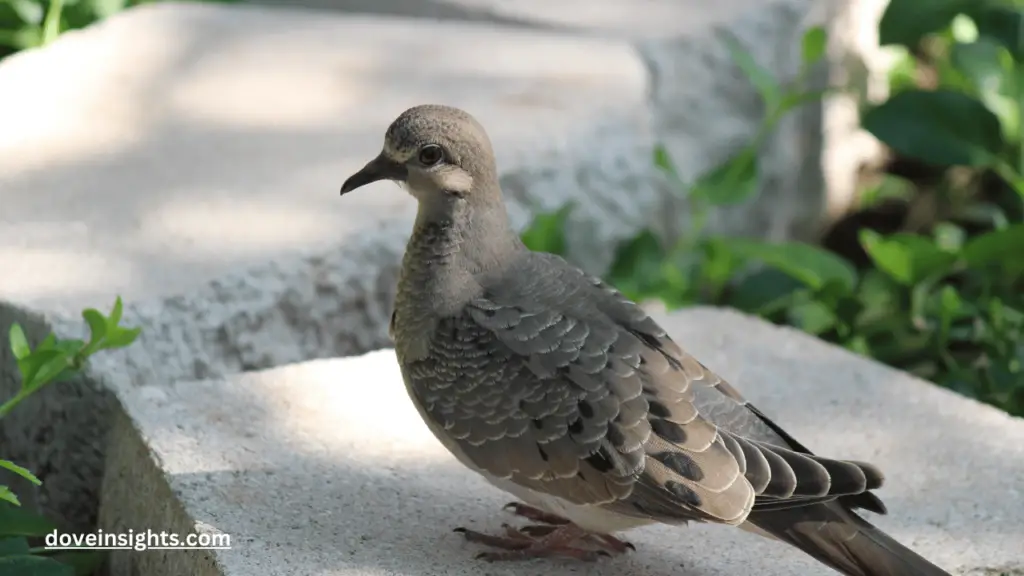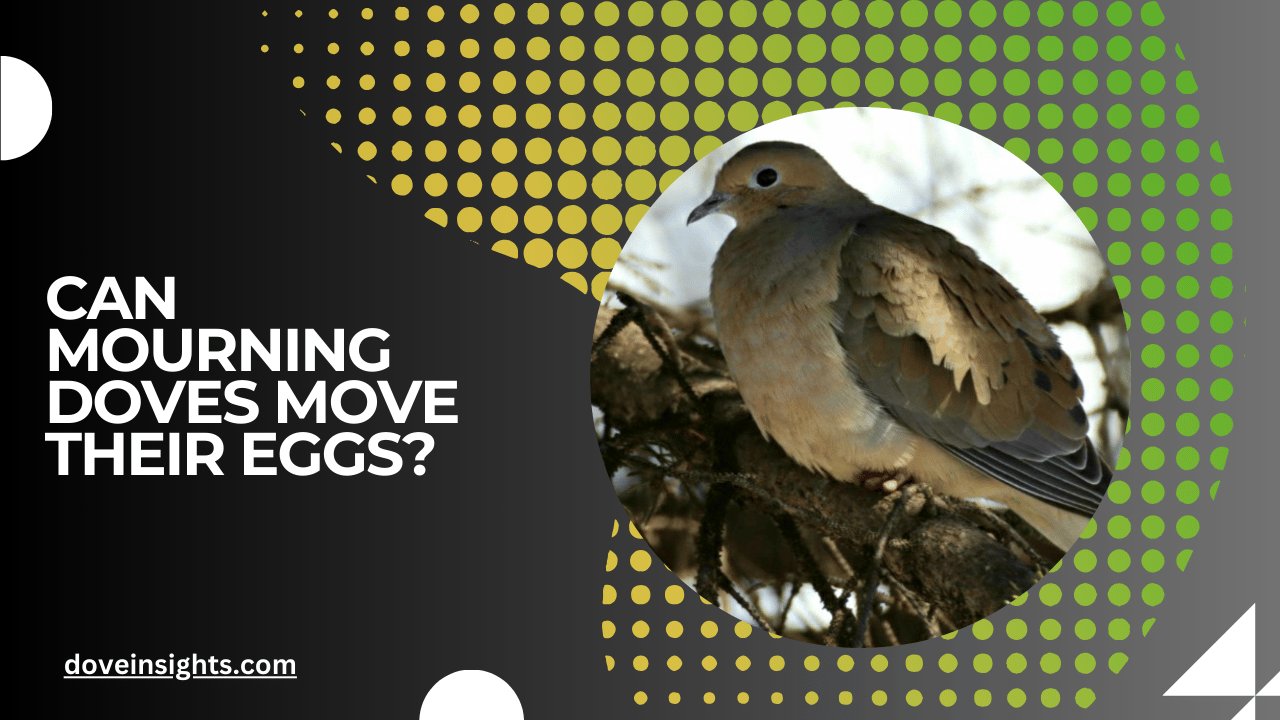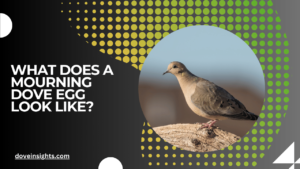In the quiet moments of early morning or dusk, the gentle coo of a mourning dove can be heard echoing through the air.
Known for their graceful flight and peaceful nature, these birds often become a symbol of tranquility. But behind their serene exterior, mourning doves possess fascinating and sometimes puzzling behaviors, especially when it comes to parenting.
One question that often arises among bird enthusiasts and casual observers is whether mourning doves can move their eggs. It’s a question that taps into a broader curiosity about bird behavior, parenting strategies, and the survival instincts of these remarkable creatures.
While the concept of moving eggs might seem foreign to many, it’s actually quite common in the animal kingdom.
Birds, in particular, have evolved various techniques to protect and care for their young. So, can mourning doves, with their gentle reputation, move their eggs if the need arises?
This article delves into the complexities of mourning dove reproduction, exploring the behavior of these fascinating birds and whether or not they have the ability to move their eggs to new locations for the safety or benefit of their offspring.
Whether you’re a birdwatcher, nature enthusiast, or just someone curious about dove behavior, understanding these processes will give you a deeper appreciation for the survival mechanisms that govern their lives.
In this article, we will explore not only whether mourning doves can move their eggs but also the intricacies of their nesting behavior, the factors that influence their reproductive choices, and the challenges they face in raising their young.
By the end of this post, you’ll have a clearer understanding of the mating habits and parenting strategies of mourning doves and how these traits contribute to their survival in the wild.
Contents
- 1 Mourning Dove Nesting Behavior: An Overview
- 2 The Myth of Moving Eggs: Can Mourning Doves Physically Relocate Their Eggs?
- 3 The Role of Parental Care in Mourning Dove Egg Protection
- 4 What Happens if a Mourning Dove’s Nest Is Disturbed?
- 5 How Mourning Doves Adjust Their Nesting Habits in Response to Threats
- 6 Conclusion:
- 7 FAQ’s
- 7.0.1 Can mourning doves physically move their eggs?
- 7.0.2 What happens if a mourning dove’s nest is disturbed?
- 7.0.3 How do mourning doves protect their eggs?
- 7.0.4 Do mourning doves build elaborate nests?
- 7.0.5 Can mourning doves relocate their eggs if they feel threatened?
- 7.0.6 How long do mourning dove eggs take to hatch?
Mourning Dove Nesting Behavior: An Overview
Before answering the question of whether mourning doves can move their eggs, it’s essential to understand their nesting behavior. Mourning doves build simple nests, usually in trees, shrubs, or even on structures like rooftops.
Their nests are not elaborate—often consisting of a few twigs loosely arranged, creating a shallow bowl. This simplicity is in stark contrast to some other birds that construct intricate and complex nests.
The female mourning dove lays one or two eggs at a time, and both parents share the responsibility of incubating the eggs.
Unlike many other bird species, mourning doves do not incubate their eggs in a highly protective environment, and they often leave them unattended for short periods while they forage for food.
This reliance on the natural environment to provide protection can make mourning dove eggs more vulnerable to predators or environmental threats.
When it comes to egg placement, mourning doves are not particularly selective about the exact location of their nests, as long as it provides some measure of safety and protection.
However, the ability to move eggs in response to danger or a deteriorating environment is a matter worth examining.
The Myth of Moving Eggs: Can Mourning Doves Physically Relocate Their Eggs?
Many people wonder if mourning doves, like some species of birds, have the ability to move their eggs from one nest to another if the initial location becomes unsafe.
The answer is no—mourning doves do not have the ability to physically move their eggs once they have been laid. Unlike certain species, such as cuckoos or robins, which may move or even abandon eggs under specific circumstances, mourning doves lack the instinct or physical capacity to relocate their eggs.
In most bird species, once an egg is laid, it is typically incubated where it is laid, and the parents work to protect the nest from predators and environmental factors.
Mourning doves, being relatively passive nesters, rely on their camouflage and the location’s natural protection, rather than actively moving eggs to safer locations.
If an egg is threatened, the mourning dove may abandon the nest, but it will not attempt to physically move the eggs.
However, there are exceptions to this general rule in the animal kingdom. Some birds, like eagles or hawks, may move their eggs or young in response to danger, but such behavior is not characteristic of mourning doves.
The Role of Parental Care in Mourning Dove Egg Protection
While mourning doves cannot move their eggs, they are not defenseless when it comes to protecting them. Both the male and female mourning dove play active roles in ensuring the safety and well-being of their eggs.
The female typically lays her eggs in a relatively protected spot, and the parents take turns incubating the eggs for around two weeks. During this incubation period, one parent stays on the nest, while the other leaves to forage for food.
One of the key elements in mourning dove parental care is the warmth provided by the parents. Mourning doves do not have the body heat to incubate eggs alone effectively; they rely on shared responsibilities to ensure that the eggs are kept at the right temperature.
The male dove often provides protection, keeping a watchful eye out for potential threats. If they sense danger, mourning doves will often display distraction tactics, such as fluttering away from the nest, to lure predators away.
In essence, while they cannot move their eggs, mourning doves utilize behavioral strategies to protect their eggs from harm.
Their instincts and teamwork provide the necessary defense mechanisms to ensure the survival of their offspring.
What Happens if a Mourning Dove’s Nest Is Disturbed?
In some cases, a mourning dove’s nest may be disturbed, whether by predators, humans, or environmental conditions. This can lead to the abandonment of the nest or the loss of the eggs.
Mourning doves are sensitive to disturbances, especially if the nest is located in an area with frequent human activity or predation risks. When this occurs, the eggs are often left behind, as the mourning doves cannot physically move them to another location.
Interestingly, mourning doves have evolved a unique survival strategy in response to nest disturbances. If they feel threatened, they may abandon the eggs altogether and attempt to build a new nest in a safer location.
This abandonment is not because the mourning doves cannot care for the eggs but because they recognize the risks of staying in a compromised location.
For mourning doves, environmental threats like heavy storms, strong winds, or predators (such as snakes or birds of prey) can also result in the failure of a nesting attempt. In these cases, the eggs may be lost, and the mourning dove will likely try again in a new, more secure location.
How Mourning Doves Adjust Their Nesting Habits in Response to Threats

While mourning doves cannot move their eggs once they have been laid, they do adjust their nesting behavior based on external factors. If a nest is disturbed or deemed unsafe, mourning doves will often relocate and rebuild elsewhere.
This adaptability is crucial for their survival, as it ensures they can continue to raise offspring even in challenging conditions.
Mourning doves also choose nesting sites with safety in mind. Nests are often placed in high branches or dense foliage where predators are less likely to spot them.
Additionally, mourning doves may rebuild their nests multiple times during a breeding season if initial nests are unsuccessful or if they face continued disturbances.
Conclusion:
While mourning doves are unable to physically move their eggs once they are laid, they employ a variety of strategies to ensure the survival of their young.
Their ability to adapt to changing environments, rebuild nests, and collaborate as parents ensures that their reproductive efforts are not in vain, even in the face of challenges. Although mourning doves lack the ability to relocate eggs, their parental instincts and protective behaviors provide ample safeguards for their offspring.
Understanding the mourning dove’s approach to parenting provides valuable insight into the fascinating world of bird behavior.
Their focus on protection, adaptability, and resilience highlights the intricacies of their survival strategies in the wild. Though they may not be able to move their eggs, mourning doves are undoubtedly remarkable creatures when it comes to ensuring the future of their species.
FAQ’s
Can mourning doves physically move their eggs?
No, mourning doves cannot physically move their eggs once they are laid. They rely on other strategies, such as nesting in safe locations and parental protection.
What happens if a mourning dove’s nest is disturbed?
If a nest is disturbed, mourning doves may abandon it, but they typically will rebuild elsewhere, often choosing a safer location.
How do mourning doves protect their eggs?
Mourning doves protect their eggs by taking turns incubating them and using distraction techniques to lure predators away from the nest.
Do mourning doves build elaborate nests?
No, mourning doves typically build simple nests with twigs and leaves, focusing on functionality rather than intricate design.
Can mourning doves relocate their eggs if they feel threatened?
No, mourning doves cannot relocate their eggs. If they feel threatened, they may abandon the nest and find a new location for a second attempt.
How long do mourning dove eggs take to hatch?
Mourning dove eggs typically hatch after about two weeks of incubation.








